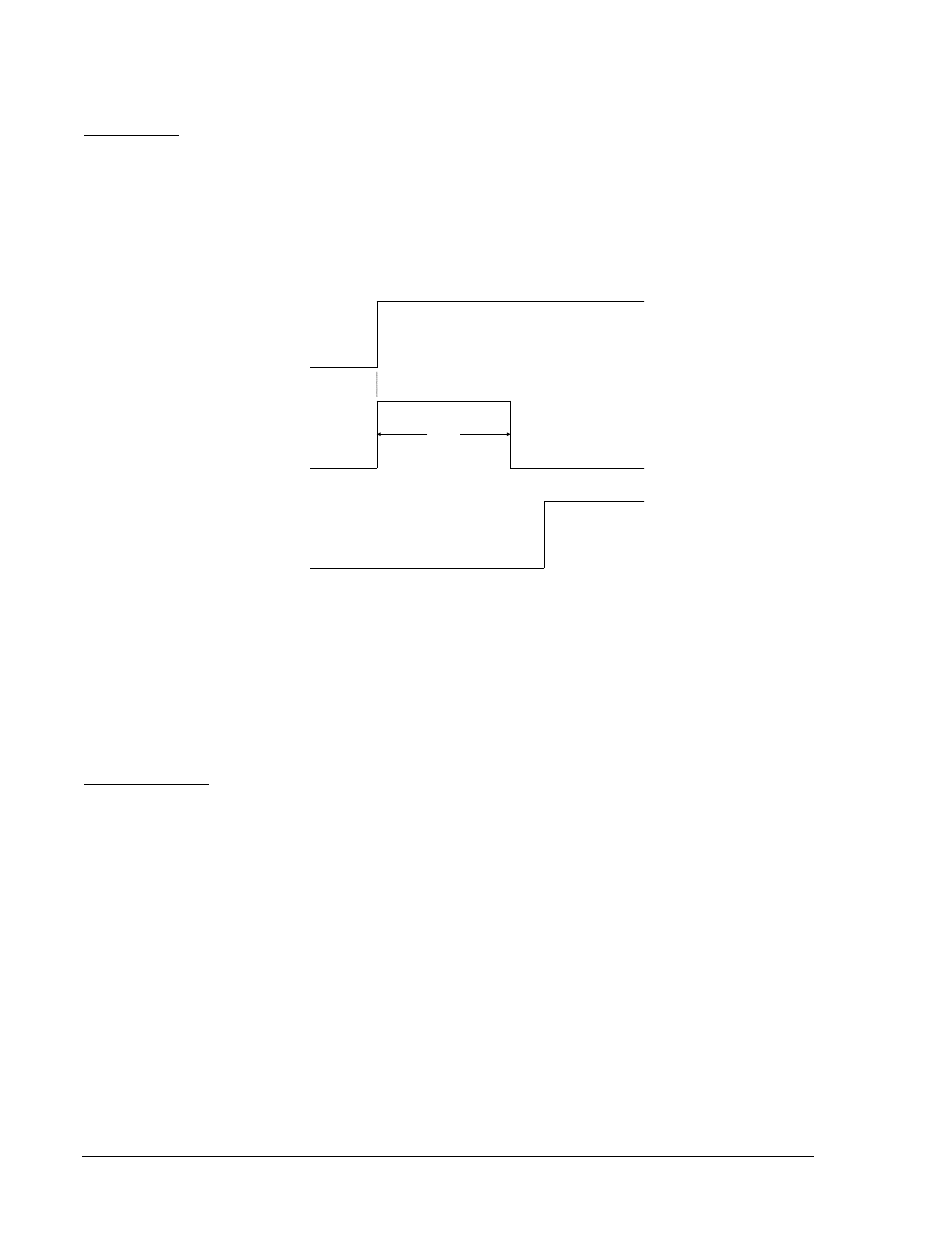Control timer, Timer diagnostics, Reclosing timers – Basler Electric BE1-BPR User Manual
Page 30: Reclosing timers -6, Figure 2-7. control timer operation

2-6
BE1-BPR Application
9272000990 Rev J
This type of timer is used to delay an operation in order to allow time for other processes to occur. For
example, in breaker failure applications, a delay timer is user to delay the breaker failure output until the
primary protection scheme has sufficient time to operate the breaker and open the circuit.
A Control timer has two inputs START and RESET, and one output T[n]. The timer will not start until the
start condition becomes TRUE and the RESET input is FALSE. Once the timer is started, a pre-
programmed time delay, TD[n], is loaded and the timer starts timing out. The timer times out TD[n] time
after the timer is started unless the timer is RESET before the time expires. During the entire period the
timer is ON (i.e. not timed out and not reset), the output T[n] is TRUE. If the timer times out, then the T[n]
output becomes FALSE. After timeout, the T[n] remains FALSE until the timer is RESET and a new
START input is received. Control timer operation is illustrated in
Control Timer
Figure 2-7. Control Timer Operation
This type of timer is used to provide a limited window of time for an operation to occur or to provide a
feedback signal to latch-in an input for a predetermined time. For example, in breaker failure applications,
a control timer can be used to latch-in a BFI input to ensure that once a BFI occurs a premature opening
of the BFI for whatever reason does not disable the BF logic.
Another application is to prevent a BF operation due to stuck contacts on the BFI input. BFI input stuck
contacts would cause a false trip any time the fault detector picks up. This problem can be minimized by
using a control timer to limit the window of opportunity for which the input can cause a trip output.
In many applications it is desirable to have a record of the timing relationship between different events. In
order to acquire this record, data must be available and accumulated over a period of time. A method to
obtain and collect this data has been incorporated into the BE1-BPR relays. This method allows relative
or absolute timing between any input, output or internal operation (i.e. timers, fault detectors) to be logged
into a circular 40 event record. The data can be retrieved for analysis using the TLOG[n] command. In
addition, because some timing requirements are critical to proper system operation, an optional alarm
output can be automatically triggered if the time logged is outside a predetermined level. The logic used
to save a timer value to the log and the optional alarm time is programmable using the PTLOG[n]
command.
Timer Diagnostics
Refer to Section 1, General Information, Timing Diagnostics, for detailed information on BF timing and an
example of using the timing diagnostics to create a MARGIN log.
Reclosing Timers
Each BE1-BPR relay provides six independent reclosing timers. Three reclosing timers (TD791, TD792,
and TD793) provide time delays for the multiple shots (one, two, and three). TD79R is the reset time
delay, TD79F is the reclose fail time delay, and TD79M is the maximum cycle timer.
Reclosing timer delay settings are programmable from the front panel or the serial port using the TD79
command. The three reclosing time delays can be set at zero or from 10 to 999 milliseconds in 1
millisecond increments, 1 to 99 seconds in 0.1 second increments, or 100 to 600 seconds in 1 second
INITIATE
OUTPUT
TD[n]
RESET
D2635-12
